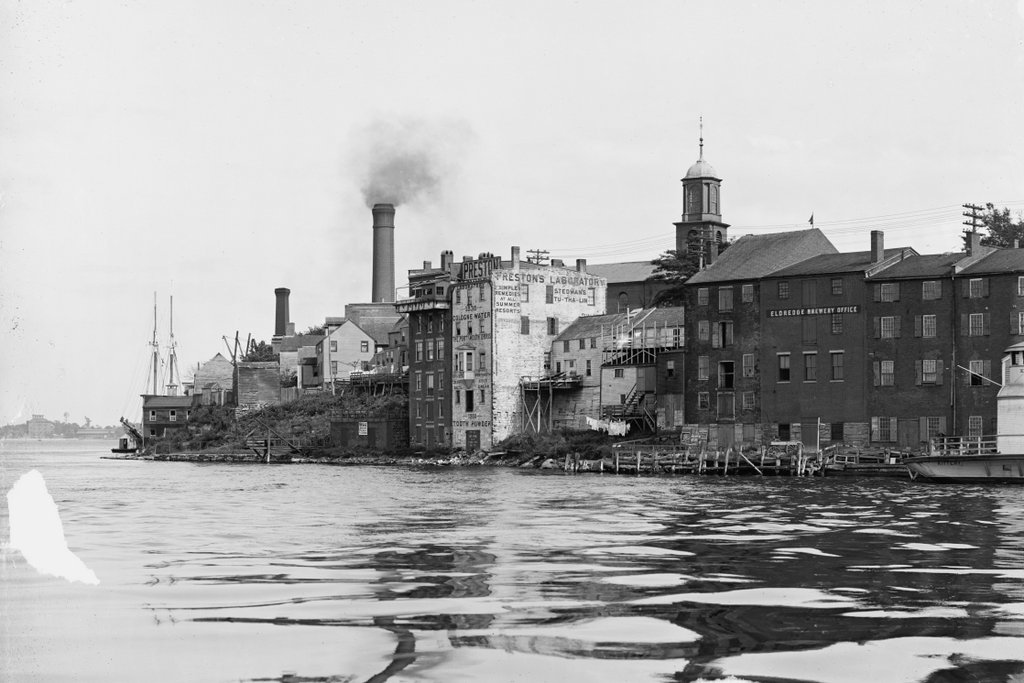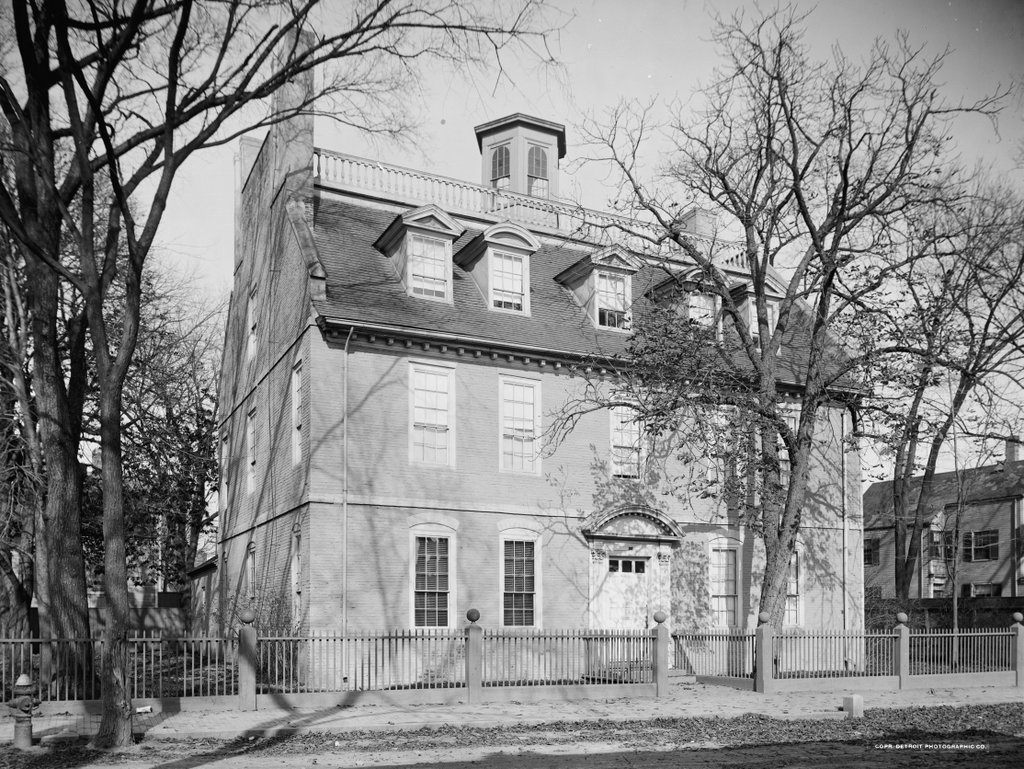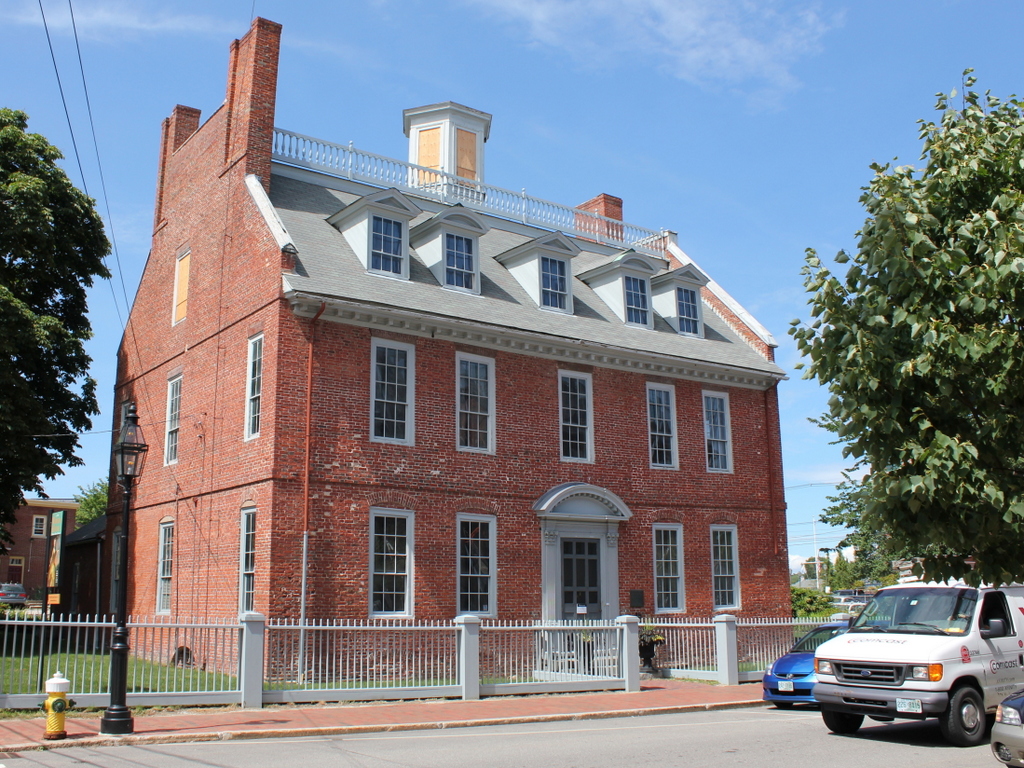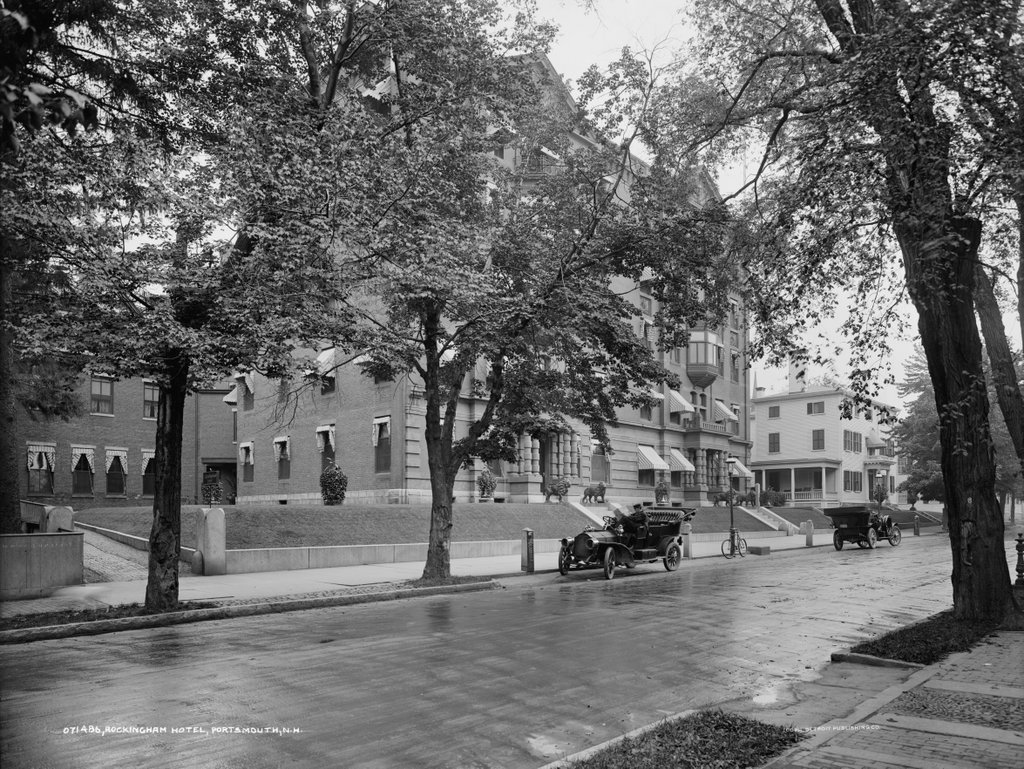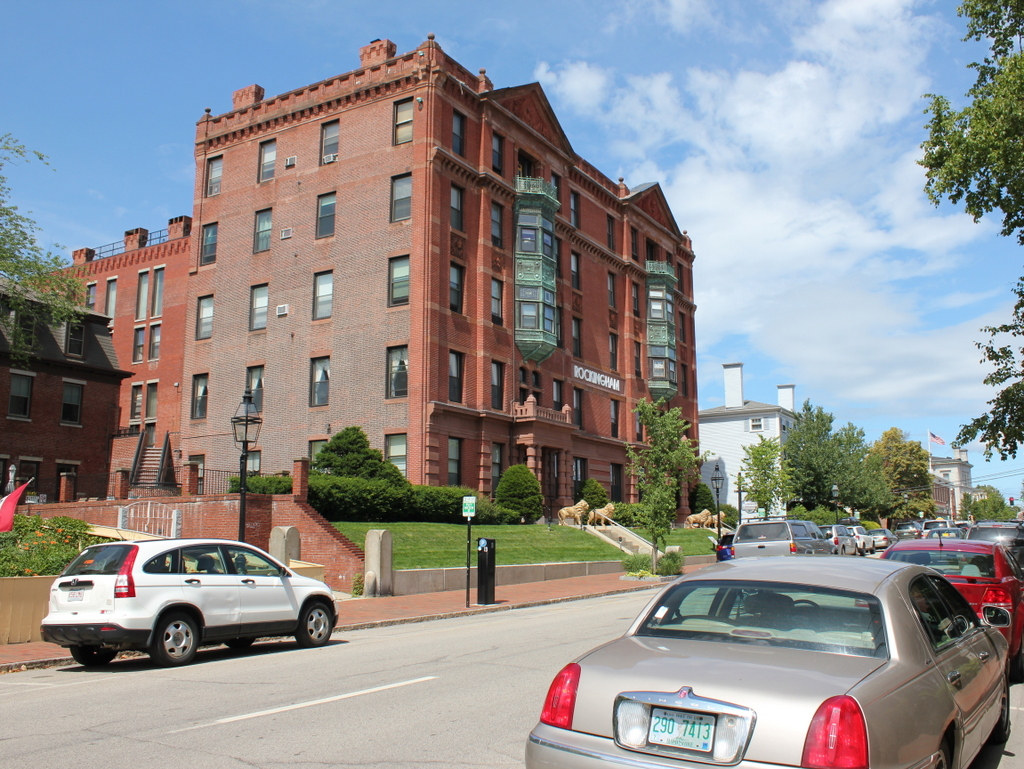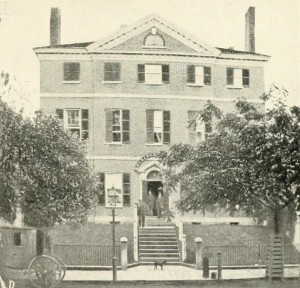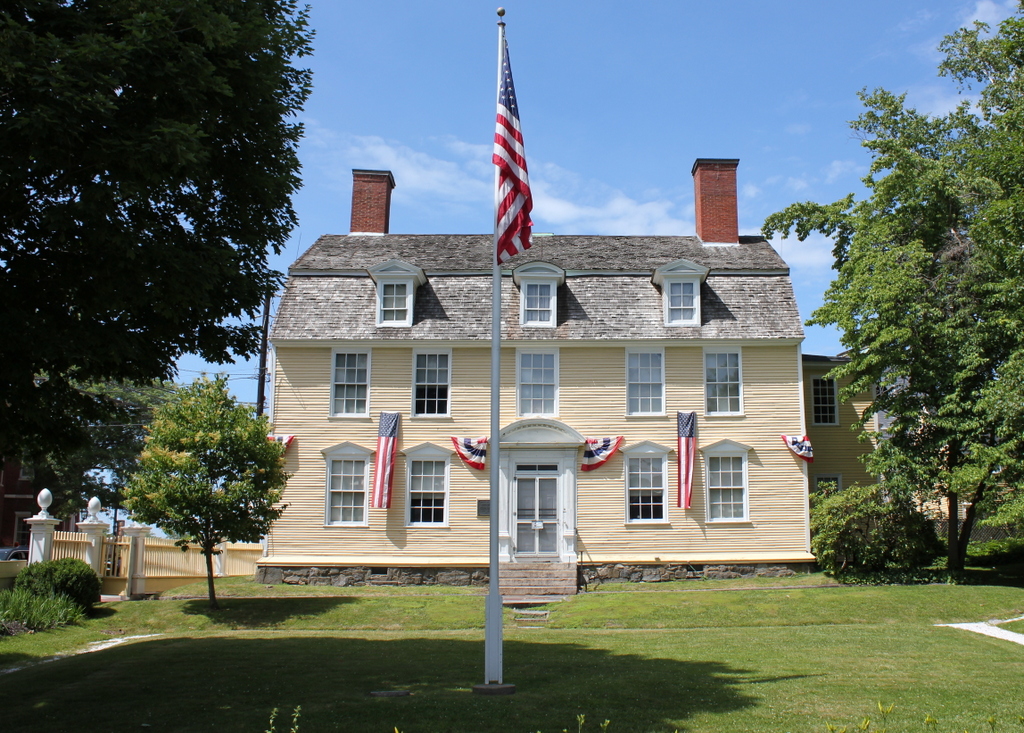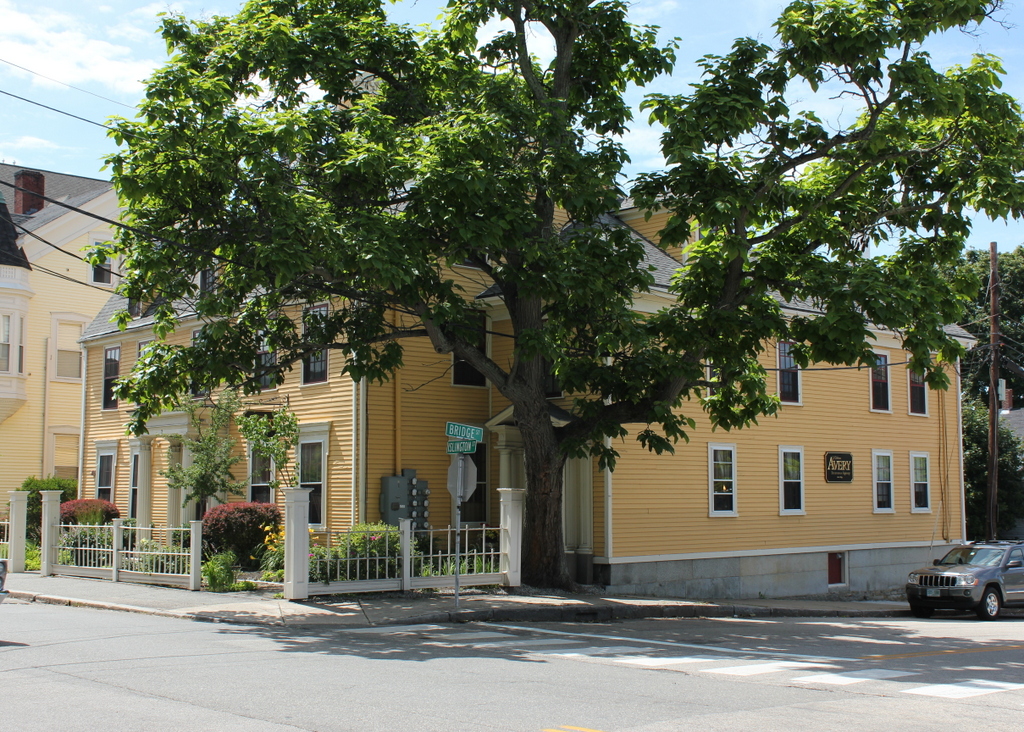The view along the Portsmouth waterfront, taken from along Ceres Street looking toward the buildings on Bow Street, around 1900-1906. Image courtesy of the Library of Congress, Detroit Publishing Company Collection.
The view in 2015:
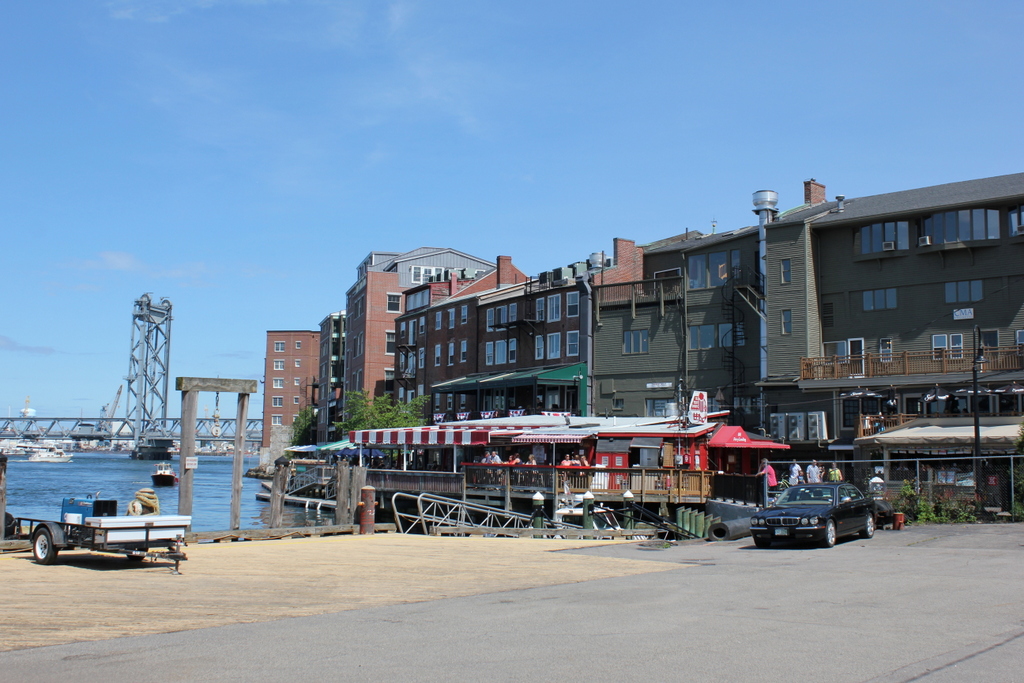
The angle here isn’t exactly the same, but the two photos show some of the same buildings while demonstrating some of the change that has occurred along Bow Street. The four buildings on the far right of the first photo are the same ones seen in the center of the 2015 view, and the two in the center of the first one still exist, but they are out of view from here, obscured by taller, modern buildings to the right of them. The spire of St. John’s Church, which features prominently in the first photo, is also still there, although from this angle just the very top of the weathervane can be seen above the buildings.
Although many of the buildings are still there, though, the greatest change has been in their use; the waterfront of early 20th century Portsmouth was heavily industrial. To the right were the offices for Eldredge Brewery, a prominent local brewery that opened in 1858 and operated for nearly a century, with a hiatus during the Prohibition era that came less than 20 years after the photo was taken. In the center of the first photo, the white building served its purpose as both the home of Preston’s Laboratory and also as a large advertisement for its products. It offered to customers such necessities as “Cologne Water,” “Tooth Powder,” and “Stedman’s Tu-Tha-Lin,” along with other “Simple remedies at all summer resorts.” Although primarily industrial, it looks like there were people living here, too – notice the laundry hanging behind some of the buildings.
Today, the waterfront has been redeveloped as an upscale commercial district, with stores and restaurants replacing breweries and drug companies. Martingale Wharf, the building once occupied by Preston’s Laboratory, is now a restaurant, one of several along this section of Bow Street that offer diners a view of the Piscataqua River. On the left, in the background of both photos, is the Portsmouth Naval Shipyard. although technically located in Kittery, Maine, the shipyard has played a major role in Portsmouth’s economy since it was established in 1800. It is still in use today, specializing in submarine repair and modernization.

